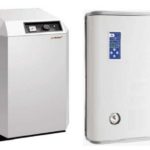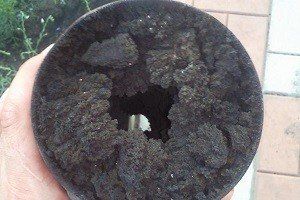Choosing an electric heating boiler for a private home
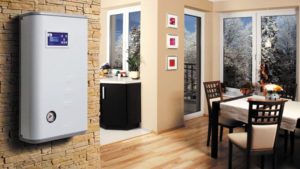 Creating a warm, cozy environment in a private home in winter depends on a well-chosen and correctly installed heat source. In the absence of a gas supply and the consumer’s reluctance to deal with the preparation of solid or bulk fuel, the use of electrical equipment for heating homes will be a simple and correct solution.
Creating a warm, cozy environment in a private home in winter depends on a well-chosen and correctly installed heat source. In the absence of a gas supply and the consumer’s reluctance to deal with the preparation of solid or bulk fuel, the use of electrical equipment for heating homes will be a simple and correct solution.
The content of the article
Advantages and disadvantages of electric boilers
Electrical equipment used to heat the coolant of autonomous heating systems has a number of advantages.
- Unlike gas and solid fuel units, electric ones do not use an open fire source during operating heating mode. The design of electrical equipment provides for heating the coolant through the influence of physical processes by special boiler elements caused by the influence of electric current.
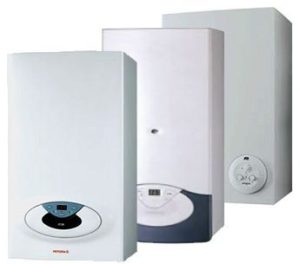
- The absence of burners and flames allows electric boilers to be fireproof if the electrical wiring is installed correctly. For the same reason, there are no harmful emissions into the atmosphere, unlike their “brothers” that use fossil resources.
- When connecting a gas main used for heating, it is necessary to comply with a whole list of technical conditions that will be presented by the gas workers servicing the territory of the household. At the same time, the low price of gas for years to come will be reflected several times in the cost of design documentation and pipe laying. And the availability of electricity does not require any approvals.
- For solid fuel and sometimes gas boilers, a special boiler room is required, equipped with all the necessary attributes of fire safety and technological equipment. The compactness of electrical units allows heating devices to fit into the interior of any living room.
- The design of electrical equipment is quite simple to control and operate. The operating mode of heating the coolant does not require control. Using simple power buttons, set the desired parameters. Further participation of the consumer in the operation of the boiler occurs if it is necessary to adjust the set parameters.
- Low price and no need for storage facilities for solid or liquid fuel are also advantages of electric boilers.
Installing electrical equipment also has disadvantages:
- The high cost of electricity and the lack of technical ability to heat large cottages.
- The use of electric boilers is effective in closed circuits of heating systems, and this will entail alteration and increase in cost of existing intra-house lines. The operation of electrical equipment with natural circulation or an open expansion tank leads to a decrease in thermal power, and therefore the relevance of the application.
In addition, installation of an electrical unit often involves the installation of additional elements:
- circulation pump to create a closed circuit;
- voltage stabilizer with high sensitivity to changes;
- replacing the coolant with a chemically neutral one, with a certain resistivity, for electrode boilers;
- replacing radiators, because hydrogen sulfide can form in the water, which destroys aluminum.
IMPORTANT! With a house area of more than 150 sq. m will require a significant increase in electrical energy consumption, and this may entail the construction of a separate electric main, with all the attendant bureaucratic difficulties!
What to look for when choosing an electric boiler for a private home
When choosing electrical equipment for heating the coolant of the heating system of your own home, first of all, use the power criterion, and then pay attention to the equipment of the unit, which will allow you to cope with the resistance of pipes and radiators in the required premises.
Power
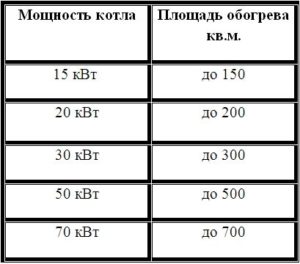 The individual features of the construction of private households oblige, when calculating, to move away from the standard calculation of heat power consumption, which comes down to a value of 100 W/sq. m. The given value is relevant for multi-apartment buildings, with a ceiling height of up to 2.65 m.
The individual features of the construction of private households oblige, when calculating, to move away from the standard calculation of heat power consumption, which comes down to a value of 100 W/sq. m. The given value is relevant for multi-apartment buildings, with a ceiling height of up to 2.65 m.
SNiPs provide for a large number of factors that influence the correctness of the calculated power value. Building codes recommend using 41 W/m3 in mid-latitudes. m, to calculate the heated room. To adjust the calculated value, correction factors are used.To understand how to calculate the thermal power required for heating a private household, consider an example calculation.
Two-storey cottage, ground floor area 100 sq. m. m, the second – 60 sq. m, ceiling height - 3 m. Energy-saving double-glazed windows are installed on one of the walls of the upper floor, all window openings are larger than the standard, the roof and walls of the house are insulated with foam plastic, 100 mm thick.
The calculation using the usual recommendations for volume standards will look like:
(100+60)x3x41=19680 W.
Considering the influencing factors:
- detached building – +20%;
- the wall of the second floor is glazed – +1%;
- increase in the size of window openings – +10%;
- insulation of the cottage - -15%.
The result is 20+1+10–15=16%.
The resulting percentages must be added to the calculated value, resulting in 19680+16%=22828.8 W.
ATTENTION! For southern regions, a correction factor of 0.9 is used, and for northern latitudes located above 60 degrees. - 1.2!
Performing the calculation will help the home owner correctly determine the required thermal power of heating equipment.
Dimensions, number of circuits, availability of automation
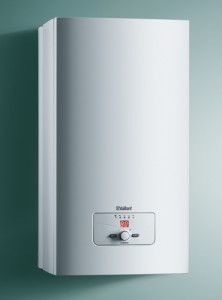 Modern electric heating boilers are equipped with automatic control of the coolant heating mode. Depending on the user’s requirements, the sensors that control the switching on and off of the unit react both to the parameters of the water in the system and to the air temperature in the room.
Modern electric heating boilers are equipped with automatic control of the coolant heating mode. Depending on the user’s requirements, the sensors that control the switching on and off of the unit react both to the parameters of the water in the system and to the air temperature in the room.
Most heating devices have one circuit, since heating several will require a large amount of electrical energy. The presence of several circuits in the heating system, for example, floor-to-floor distribution of coolant or division into heating of individual rooms in different modes, requires the installation of additional equipment on pipelines and taps.
Electric boilers are not always equipped with a circulation pump and a membrane tank. Their absence will require additional costs for purchase and installation. The characteristics of the pump and reservoir must meet the installation requirements:
- the electric pump, regardless of the manufacturer, has a digital designation of operating and connection parameters, for example, 25/4 or 30/8; the first number means the diameter of the connection, and the second – the height that it overcomes;
- The capacity of the membrane tank must be at least 6–10% of the coolant volume.
Failure to match the boiler equipment with the technical parameters of the heating system will not allow maintaining the desired temperature in all rooms of the building and will require replacement of the pump or tank.
REFERENCE! For ease of maintenance, many manufacturers install a pipe to drain water from the unit, but some do not!
Types of electric heating boilers
Depending on the design of the heating element, electrical units are:
- Heating elements in which heating is produced by tubular elements located inside the water tank. By means of a circulation pump, the liquid constantly moves through the pipelines, then returns to the heater. The manufacturing technology of electric boilers provides for the presence of two or more heating elements, which are turned on, depending on the temperature requirements.
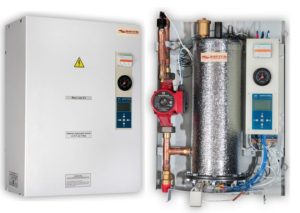
- Induction units are based on the heating principle, a coil with a ferromagnetic core, which, similar to the operation of a transformer, after applying current to the winding, heats up and transfers heat to steel pipes with coolant. Unlike heating elements, the heating element is protected from scale and has a large surface for heat transfer. Such equipment is more efficient and reliable, which is reflected in its high cost.
- Electrode boilers are characterized by their simple design. Current is supplied to the housing and the electrode located inside, at a short distance from the inner surface. Due to the potential difference between the parts of the unit and the resistivity of the water, the coolant heats up and then moves through the pipelines of the heating system.
ATTENTION! The use of tubular-type heating elements in flow-through systems leads to scale formation and a decrease in thermal power!
Such equipment has the shape of a compact pipe with a slight extension for electrical connections. Requires a circulation pump and a membrane-type tank. Automatic control of the heater operation is carried out in the form of a separate unit. The low cost of electric boilers is compensated by high requirements for the quality of the coolant: it must have a resistivity that is regulated by its chemical composition. Due to the direct transfer of heat from electricity to water, this product segment has high efficiency. Such heating devices are considered energy efficient.
REFERENCE! A coolant leak cannot harm this equipment! Without water, the unit will stop heating, and the energized surfaces located at a safe distance will remain in a closed internal cavity!
Having understood the design differences of electric boilers, as well as the features of selection and configuration, the consumer will understand which heat source to choose for his own home.

